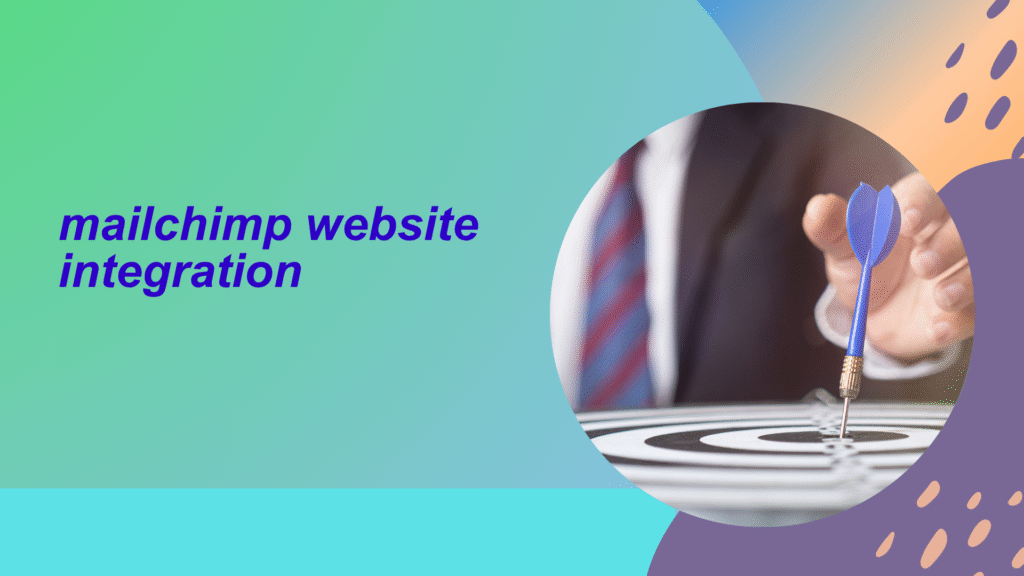You usually Ask you to connect it to your Mailchimp account. called an “API key,” which is a special password Mailchimp gives you. Once connected, this plugin lets you easily add Mailchimp signup forms to your pages, posts, or even your website’s sidebar. Moreover, this plugin simplifies how you collect new email addresses.
If you have an online store built with Shopify, Mailchimp often connects directly. This integration is fantastic for e-commerce. It can automatically send customer information and order details to your Mailchimp account.
For instance, when someone You usually
Buys something from your Shopify store, their email address and what they bought can automatically go to your Mailchimp list. This means you can then send them special emails based on their purchases. Many other online tools and services also have direct integrations with Mailchimp. This means they are built to “talk” to each other without much effort from you. Hence, these integrations greatly improve how you talk to your website visitors and manage your customer information.
Getting Smart with Mailchimp Automations
Mailchimp isn’t just about sending one-time emails. It’s also super smart because it can send emails all by itself. This is called automation. Automation means setting up emails that go out automatically when something specific happens. It saves you a lot of time and makes sure your visitors always get the right message at the right moment.
Welcome Emails: A Warm Hello
One of the most common and useful automations is the welcome email. Imagine someone just signed up for your email list from your website. A welcome email is the first message they get, sent automatically by Mailchimp right after they sign up. Indeed, it makes a good first impression. This email can do a few important things. It confirms they’ve joined your list, thanks them for signing up, and can even offer a small gift, like a discount code or a link to a helpful guide. It’s like saying, “Glad to have you here!”
Setting up a welcome email in Mailchimp is quite simple. You go to the “Automations” section in your Mailchimp account. Then, you choose to create a new automation and select “Welcome New Subscribers.” You can then design your welcome email, decide what it says, and tell Mailchimp to send it right away when someone new joins your list. Similarly, you can set up emails for other actions people take on your website.
Abandoned Cart Emails: Don’t Forget Me!
Another powerful automation, especially if you sell things online, is the abandoned cart email. Have you ever put items in an online shopping cart but then left the website without buying them? That’s an “abandoned cart.” Mailchimp can help you bring those customers back. It can automatically send an email reminding them about the items they left behind. For example, it might say, “Did you forget something in your cart? Come back and finish your purchase!”
These emails often include pictures of the db to data they left and a link back to their cart, making it easy for them to complete their purchase. This can be a huge help for online stores. Ultimately, it can help you make more sales and reduce lost opportunities. To use this feature, your e-commerce website (like a Shopify store) needs to be properly connected to Mailchimp. This connection allows Mailchimp to see when a cart is abandoned. It’s a smart way to gently nudge customers back to your shop.

Understanding Your Website Visitors with Mailchimp
It’s great to send emails, but it’s even better to know if your emails are working. Mailchimp helps you understand your website visitors and email subscribers through audience insights. This means it collects useful information about the people on your email list.
Audience Insights: Learning About Your List
Mailchimp shows you things like who opened your emails and who clicked on the links inside them. This data is super valuable. Consequently, you learn what your audience likes to read and what they are interested in. If many people open an email about a new blog post, you know that topic is popular. If few people click a link to a certain product, maybe that product isn’t as appealing. This helps you send more of what your audience wants and less of what they don’t. Indeed, this makes your emails more effective and your audience happier.
You can also use Mailchimp to create segments
Segments are like small groups within your big email list. You can group people based on different things. For instance, you can send special emails to people who bought a specific item, or to those who clicked on a certain type of link. This means your messages can be even more personal and helpful. Understanding your audience helps you make better business decisions and build stronger connections. It’s like having a superpower that tells you what your customers are thinking.
Keeping Your Mailchimp Integration Safe and Sound
Once you have your website and Mailchimp connected, it’s important to make sure everything keeps working smoothly. Just like you check your bike tires before a ride, you should check your Mailchimp connection now and then.
Check Your Connection Regularly
It’s a good idea to test your signup forms from time to time. This means going to your website and signing up yourself with your own email address. Therefore, you can see if the process works as it should. After you sign up, check your Mailchimp account to make sure your email appeared on your list. Also, make sure the welcome email (if you set one up) arrives in your inbox. Indeed, you don’t want to miss out on new subscribers australia email list of a tiny technical hiccup. A quick check once a month or so can prevent problems and ensure your email list keeps growing without issues. If something isn’t working, Mailchimp has helpful guides to fix common problems. Furthermore, always follow privacy rules to protect your subscribers.
Respecting Privacy
When people give you their email address, they are trusting you. It’s very important to respect their privacy. This means you should never buy email lists from other companies. Only collect emails from people who have willingly given you their permission to send them messages. Consequently, this builds trust and a strong relationship with your audience. People are much more likely to open emails from someone they trust.
Also, it’s a legal requirement to always include an “unsubscribe
Link in every email you send. This link allows people to easily remove themselves from your list if they no longer want to receive use a logical hierarchy of headings emails. Make sure this link works properly. There are also rules, like GDPR in Europe or CCPA in California, that are about keeping people’s information safe. While these rules can be complex, the main idea is simple: be honest, be clear about how you use people’s data, and always respect their choices. Ultimately, being trustworthy is key to long-term success in email marketing.

